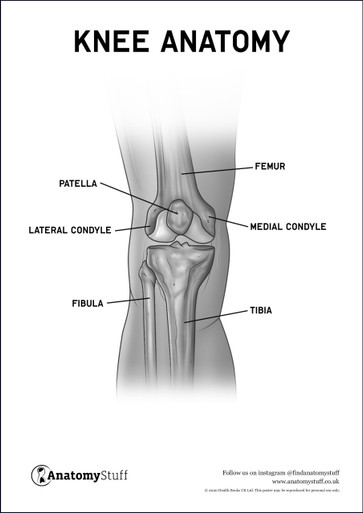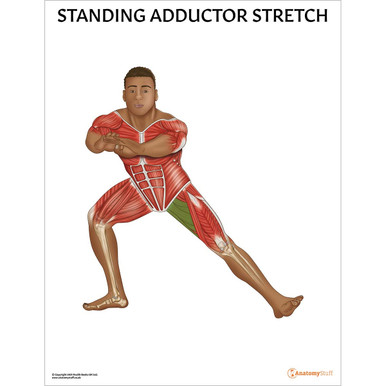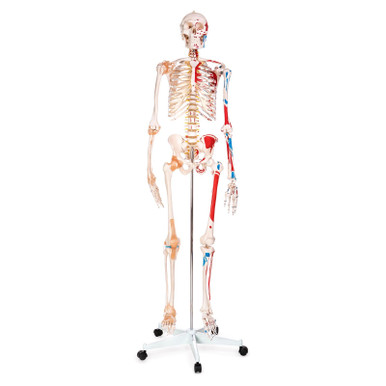Stretching Anatomy
Stretching before and after yoga, or any exercise is a common and important practice. Considering the importance of stretching. The American College of Sports Medicine has included stretching as one of the five components of physical fitness.
Since the whole musculoskeletal system and soft tissues are involved in each pose of stretching, we believe you should know the importance of stretching in anatomical terms. So let’s begin!
Stretching Poses and their Anatomy
Muscles and joints are the two significant body parts doing all the work during stretching. In fact, the whole musculoskeletal system supports the working muscles and joints, protecting them from any accidents. These structures include ligaments, capsules, tendons, connective tissues, and fascia.
The major function of muscles is to contract and relax and keep the whole body moving. Joints are made up of bones, ligaments, capsules, and membranes which all have a certain range of motion (ROM).
Both these anatomical structures work together and are activated, engaged, and strengthened during different stretching postures. Moreover, Golgi Tendon Organs (that connect muscles with the bones) help prevent the movement of joints beyond their capacity by relaxing the muscle when it is overstretched.
Let’s now highlight the main stretching poses, their anatomy, and the benefits they provide.
Stretching Hip Flexors
The three hip flexors are Sartorius (the longest muscle in the body), rectus femoris, and iliopsoas. Lunge-stretch works great for the rectus femoris, and side-bend with lunge stretch mainly focusses on the psoas muscle. The stretch is also good for the trunk, hip, and knee joints.
Stretching Quadriceps
This is the group of anterior thigh muscles including the four quads and sartorius. The four quads are rectus femoris, vastus medialis, vastus intermedius, and vastus lateralis. Out of these, the rectus femoris has a major role as it crosses both hip and knee joints.
Hip extension and knee flexion with a straight back and poses like the split squat, split lunge and split jerks provide a good stretch to muscles and mobility to these joints.
Note: Try not to arch your trunk as it will take tension off of the rectus femoris.
Stretching Adductors
Adductors are the inner group of muscles in the thigh. These include Gracilis, pectineus, Adductor longus, brevis, and Magnus (part of which is also included in hamstring muscles).
Abducting the hip joint as in a leg split or deadlift results in tightening up of adductors which limits the abduction by pulling the abductors inwards. The same happens in the squat; adductors tighten up when knees are bent and hamstrings are slacked.
Stretching Hamstrings
The posterior group of thigh muscles consists of the Bicep femoris (long and short head), semimembranosus, and semitendinosus. Out of these, the bicep femoris is inserted laterally, and the latter two are inserted at the medial aspect of the leg.
The Hamstrings stretch during hip flexion and knee extension. Make sure to keep the knee joint (the leg) straight and avoid bending the lower trunk.
Stretching Pecs
Pecs are the two muscles, Pectoralis major and Pectoralis minor located anteriorly in the thorax which is attached over the ribs. They help in shoulder flexion and adduction. Hence, to stretch the pecs, the weight lifting technique may help.
Stretching Calves
The gastrocnemius and soleus are the two muscles of the shaft. Gastroc, due to its attachment points, crosses both the knee and ankle. Hence, to stretch this muscle you have to lock the knee and make sure it doesn’t bend.
Soleus limits the dorsiflexion at the ankle during the squat. To stretch the soleus, bending the knee is mandatory, unlike gastrocnemius stretching.
Stretching Lats
Lats or Latissimus dorsi originates at the lower back and inserts on the humerus providing external and internal rotation. Postures like chin up, overhead pullup, side plank, and side bend help stretch the lateral and posterior muscles along with the joints.
Note: Hold each pose for at least 30 seconds and take a 10-second rest before continuing to the next pose.
Other important stretching poses commonly carried out during exercise include, Shoulder stretch, Triceps stretch for upper arm and shoulder, and Trapezius stretch for neck muscles.
Free PDF Downloads
View AllImportance and Benefits of Stretching
Be it driving, sitting, working at a desk, using a phone, watching TV, or simply bending forward to pick up a fallen item, for most of our daily routine, we use flexors and extensors. The lateral muscles, abductors, and adductors are hardly used in daily tasks, but stretching gives equal importance to all muscles and joints of the body.
The following are the benefits of stretching:
• Increases flexibility
• Strengthens muscles
• Improves muscle tone
• Delivers better athletic performance
• Reduces soreness
• Protects the body from injuries and also helps injuries heal faster
• Increases joint mobility
• Physically makes us fit
Once you get hold of the stretching routine, maintain it and stretch every day for at least 15 minutes. Mostly, the results are visible after six weeks of consistent stretching but maintaining it afterwards is essential!
To Conclude
The key point to highlight is when you are stretching one part of the body, make sure you don’t feel tightness in any other part or joint as that simply means you are doing it wrong. Only the joints and muscles you target should bend and stretch.















